Study Finds Benefits from Scotland’s R100 Gigabit Broadband Rollout

The Scottish Government (SG) have published an interim evaluation report for their ongoing £697m Reaching 100% (R100) project with Openreach, which has so far helped to deploy full fibre (FTTP) broadband to 93,800 extra premises in remote rural areas. The report finds benefits in terms of “business productivity, enhanced personal wellbeing and strengthened resilience for households and communities“.
The R100 scheme currently aims to cover around 113,000 premises – split across three contracts – in areas that lack access to “superfast broadband” (30Mbps+) by March 2028. The most challenging LOT 1 (North Scotland and the Highlands) area is expected to cover around 61,000 premises by 2027/28, while LOT 2 (Central Scotland) was due to reach 32,000 by 2023/24 and LOT 3 (South Scotland) targeted 22,000 by 2024/25.
Just for some wider context. At the end of June 2025 some 81.89% of premises in Scotland could access a gigabit-capable (1Gbps download) broadband ISP network and this fell to 70.20% when only looking at FTTP technology (here); most of that has been delivered via commercial investment. Ofcom predicts that Scotland’s full fibre (FTTP) coverage will reach somewhere between 81-93% of homes by January 2028 (here), rising to 87-94% for gigabit-capable broadband (FTTP + Hybrid Fibre Coax / cable).
Advertisement
The new R100 evaluation report, which involves a lot of different data sources and surveys, is a whopping 172 pages long and makes for quite a laborious read. But it broadly found that 76% of businesses connected via the R100 programme reported increased productivity, with 52% citing improved innovation and 69% experiencing overall performance gains.
The programme is also said to have delivered wellbeing and social impacts. Of residents connected via R100, 49% reported improved wellbeing with benefits cited including reduced isolation, better access to healthcare and education, and stronger community engagement.
On the flip side, the report suggests that a lack of awareness of R100 is the “primary barrier to up-take“, with more than 85% of Group 2 households eligible for the voucher scheme, 50% of Group 2 households eligible via the main contracts, and 81% of Group 2 businesses unaware of R100.
Furthermore, for the large majority of households who were unaware, the lack of awareness was the only barrier to take-up with the majority of those in the sample who were unaware (89% of households with a current connection and 74% of those without a current household connection) stating that they intend to apply now that they know about the programme.
Advertisement
The evaluation findings demonstrate that infrastructure improvements alone are insufficient to deliver equality of outcome. “Affordability, digital skills, confidence and service reliability remain key challenges, particularly for older adults, disabled people, low-income households, children and young people, and those in rural and island communities,” said the report, which includes a few recommendations.
Key R100 Recommendations
To ensure that equality is central to delivery and that the programme delivers not only on connectivity targets but also on Scotland’s broader commitments to equality and social justice, the following measures should be considered:
➤ Targeted communications: Deliver awareness campaigns in accessible formats and through trusted intermediaries, including schools, GP practices, libraries and community groups, particularly in rural and island areas.
➤ Application and switching support: Provide dedicated support to residents and microbusinesses in navigating voucher applications and provider switching, ensuring older adults and those with limited digital literacy are not excluded.
➤ Affordability measures: Strengthen promotion of social tariffs, explore targeted subsidies or device loans for low-income and disabled households, and consider funding for assistive technologies.
➤ Parity of outcome assurance: Introduce clear quality standards for voucher-based solutions, supported by monitoring of service reliability and consumer satisfaction across geographic areas.
➤ Support for children and young people: Work with schools and youth services to combine connectivity improvements with access to devices, skills development and safe online environments.
➤ Inclusive service design: Ensure that digital public services retain telephone or face-to-face options, particularly for older adults and disabled people in rural communities.
➤ Ongoing equality monitoring: Track awareness, take-up and satisfaction by age, disability, income and geography. Regular reporting can identify emerging gaps and inform responsive action.
Mark is a professional technology writer, IT consultant and computer engineer from Dorset (England), he also founded ISPreview in 1999 and enjoys analysing the latest telecoms and broadband developments. Find me on X (Twitter), Mastodon, Facebook, BlueSky, Threads.net and Linkedin.
« INCA Oppose Ofcom UK Proposals on Openreach Wholesale Broadband Pricing





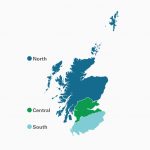




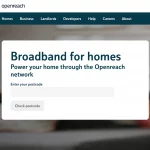

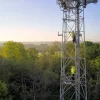
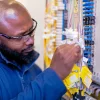

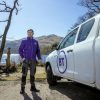





































Privacy Notice: Please note that news comments are anonymous, which means that we do NOT require you to enter any real personal details to post a message and display names can be almost anything you like (provided they do not contain offensive language or impersonate a real person�s legal name). By clicking to submit a post you agree to storing your entries for comment content, display name, IP and email in our database, for as long as the post remains live.
Only the submitted name and comment will be displayed in public, while the rest will be kept private (we will never share this outside of ISPreview, regardless of whether the data is real or fake). This comment system uses submitted IP, email and website address data to spot abuse and spammers. All data is transferred via an encrypted (https secure) session.